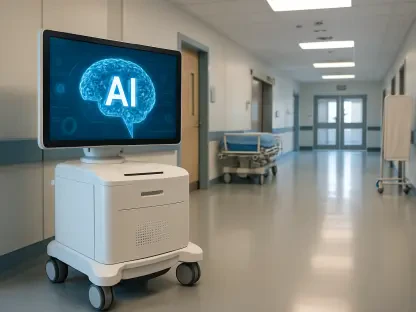In recent years, the increasing demands on emergency medical services (EMS) have required significant improvements to the systems and software that support these critical functions. ESO, a leading provider of data services and software solutions for EMS, fire departments, hospitals, and various governmental agencies, has announced transformative enhancements to its Electronic Health Record (EHR) platform. These upgrades are aimed at improving connectivity between EMS, dispatch, incident reporting, and patient health records, thereby addressing the unique challenges faced by resource-constrained EMS agencies. By leveraging these advancements, EMS providers are set to experience marked improvements in operational efficiency and patient outcomes, signifying a new era in emergency medical care.
Enhancing Connectivity and Resource Allocation
The integration of advanced technology into emergency services is essential in today’s fast-paced environment. ESO’s acquisition of Logis Solutions has enabled significant enhancements to its EHR platform. This has allowed for better optimization of EMS resources in real-time. In practice, this means EMS professionals can access more comprehensive and accurate patient information while en route to or at the scene of an emergency. The improved platform facilitates high-quality documentation, critical care functionalities, simplified reporting, and intuitive workflows, all designed to streamline operations.
Patient-centered solutions are among the key themes of these enhancements. Eric Beck, the president and CEO of ESO, emphasized that the updated EHR platform’s mobile-enabled solutions are tailored to the diverse needs of different communities. This approach not only improves the efficiency of EMS professionals but also leads to better patient care. The inclusion of a longitudinal record ensures vital patient data is accessible throughout the entire care process. Additionally, the enhanced support for mobile integrated healthcare, along with a native iOS application featuring hands-free data collection capabilities, signifies a crucial step forward in EMS technology.
Improving Efficiency and Patient Outcomes
Jeff Williams, the deputy medical director of Wake County Emergency Medical Services, has lauded the platform’s ability to provide valuable insights into calls, thereby enhancing the efficiency and prioritization of EMS responses. In 2025, these updates are expected to have introduced significant advancements, such as 911 dispatch assistance and auto-generated narratives for patient care reporting. Early adopters have already reported notable improvements, including an 80% reduction in narrative documentation time and a 30% decrease in time required to lock a record.
The updates to ESO’s EHR platform reflect a broader trend toward the integration of sophisticated technology in emergency response services. These improvements are set to address the growing demands placed on EMS systems, ensuring that they can respond more effectively and efficiently. By facilitating better resource allocation and improved patient care, these technological advancements underline ESO’s commitment to fostering community health and safety through innovative, user-friendly solutions.
Fostering Innovation and Meeting Evolving Needs
Since its inception in 2004, ESO has broadened its software portfolio considerably, offering solutions such as the ESO Health Data Exchange (HDE), ESO Fire RMS, ESO Patient Registry, and ESO State Repository. Headquartered in Austin, Texas, ESO serves thousands of customers worldwide, establishing itself as a pioneer in healthcare technology. The continuous expansion and enhancement of its offerings highlight ESO’s dedication to pushing the boundaries of what is possible in emergency medical services.
The recent updates, including high-quality documentation, critical care functionalities, and intuitive workflows, are a testament to the company’s relentless pursuit of innovation. By focusing on mobile-enabled, patient-centered solutions, ESO ensures that EMS providers have the tools they need to deliver top-tier care. This, in turn, directly impacts patient outcomes, making the emergency response process more efficient and effective.
Paving the Way for Future Advancements
The incorporation of advanced technology into emergency services is crucial in our fast-paced world. ESO’s acquisition of Logis Solutions has significantly improved its EHR platform, optimizing EMS resources in real-time. EMS professionals now have access to more accurate and comprehensive patient information while en route to or at the scene of an emergency. This enhanced platform supports high-quality documentation, critical care functions, simplified reporting, and user-friendly workflows, streamlining overall operations.
A key focus of these updates is patient-centered solutions. Eric Beck, president and CEO of ESO, stated that the new mobile-enabled EHR platform is tailored to the unique needs of different communities. This approach not only boosts the efficiency of EMS professionals but also enhances patient care. With the inclusion of a longitudinal record, vital patient data is accessible throughout the entire care continuum. Furthermore, improved support for mobile integrated healthcare and a native iOS app with hands-free data collection capabilities mark a significant advancement in EMS technology.









